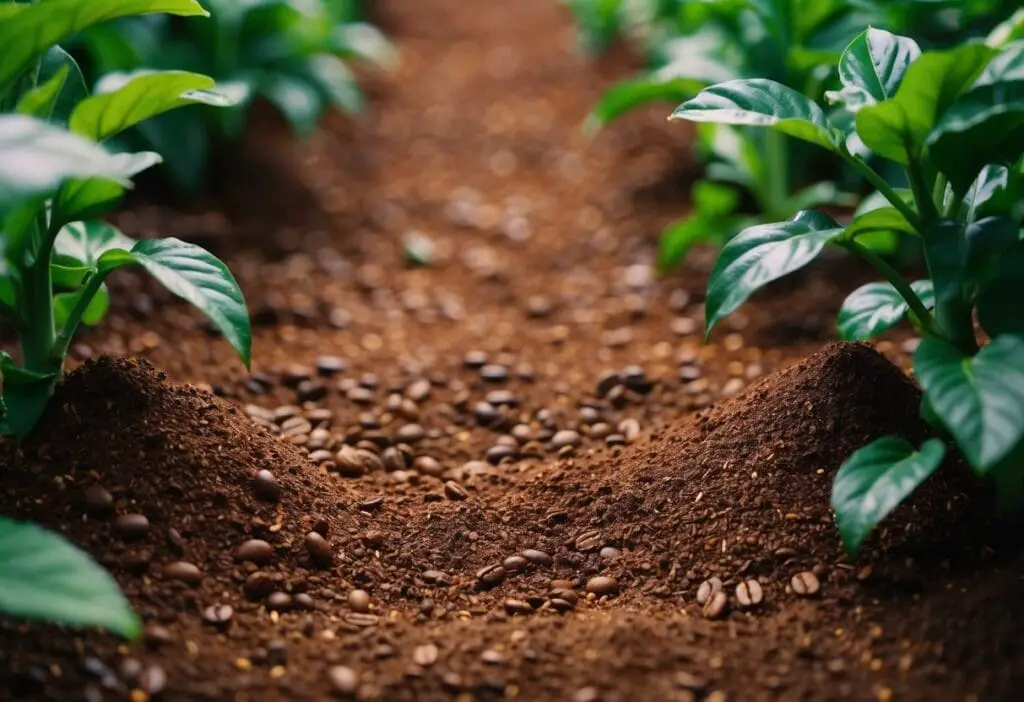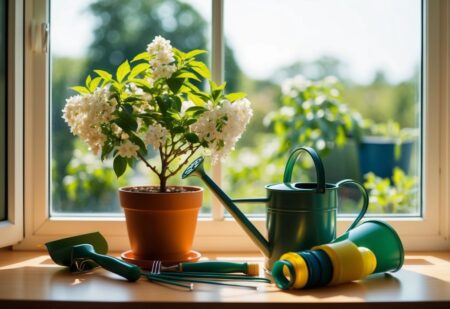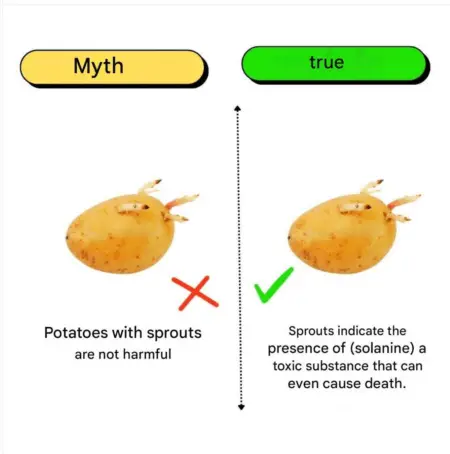Coffee grounds offer many benefits that many may overlook. Rich in micronutrients, coffee serves as an organic fertilizer that can enhance plant growth.
However, it is important to understand the proper techniques for using coffee grounds in the garden. Simply adding them to the soil without preparation may not yield the best results.
Utilizing coffee grounds allows gardeners to enrich their soil naturally, avoiding synthetic chemicals. This environmentally friendly approach encourages people to reconsider how they dispose of coffee remnants, turning potential waste into a valuable resource for their plants. This article aims to provide a comprehensive guide on the effective use of coffee grounds in gardening.
Table of Contents
Key Takeaways
- Coffee grounds are beneficial for enriching soil with essential nutrients.
- There are specific plants that thrive on coffee grounds, while others may not.
- Proper application and frequency are key to maximizing the benefits of coffee in gardening.
Using Grounds as a Natural Nitrogen Fertilizer
Coffee grounds serve as an excellent nitrogen-rich fertilizer for plants. With nitrogen levels comparable to those found in grass clippings, they are a great addition to any garden.
Nitrogen plays a crucial role in promoting fast plant growth, strengthening stems, and aiding chlorophyll production. When integrated into the soil, coffee grounds provide essential nutrients that aid in the development of robust plants.
When using coffee grounds, gardeners should remember that these grounds also make a valuable addition to compost. They contain about 2% nitrogen, making them effective for creating nutrient-dense compost when used in the right ratios.
To get the best results, it is important to maintain proper watering practices. This includes allowing the soil to dry out in between waterings to avoid mold growth.
Using Coffee Grounds as Mulch
Coffee grounds can be utilized as a protective mulch for both indoor and outdoor plants. This method helps to keep moisture in the soil, protects against pests, and enhances soil quality.
Gardeners can apply well-dried coffee grounds around the base of plants. As the grounds absorb water during each watering session, they slowly release nitrogen back into the soil, benefiting the plant’s root system. This not only supports the plant’s growth but also helps in guarding the plants against harmful pests.
Composting with Coffee Grounds
Incorporating coffee grounds into compost piles can greatly speed up the composting process. These grounds act as nitrogen compounds that help generate warmth in the compost heap, fostering a quicker breakdown of organic materials.
To create an efficient compost mix, a good ratio is to blend 50% coffee grounds with 30% straw and 20% dried leaves.
Creating a compost pile involves a few steps:
- Set up a compost bin in a sheltered spot away from rain and strong winds.
- Layer coffee grounds, straw, and dried leaves together in the pile.
- Mix well and cover the materials with rich soil.
- Add moisture to the compost, making it slightly damp, and create holes within the pile to maintain airflow.
This compost will typically be ready in about 3-4 weeks and can serve as a rich, organic fertilizer for both garden and house plants.
Coffee Grounds as a Pesticide
Coffee grounds can effectively deter various pests from invading gardens. Many insects, such as ants, snails, and slugs, are averse to coffee grounds, making it a natural barrier for plants.
Additionally, some gardeners have reported that coffee grounds can help eliminate insect larvae, including mosquitoes and garden bugs. Although coffee grounds are not as potent as traditional insecticides, their non-toxic nature offers a safer alternative for pest control in home gardens. This property makes them particularly appealing for gardeners looking to avoid harsh chemicals while still protecting their plants.
What Plants Benefit from Coffee Grounds
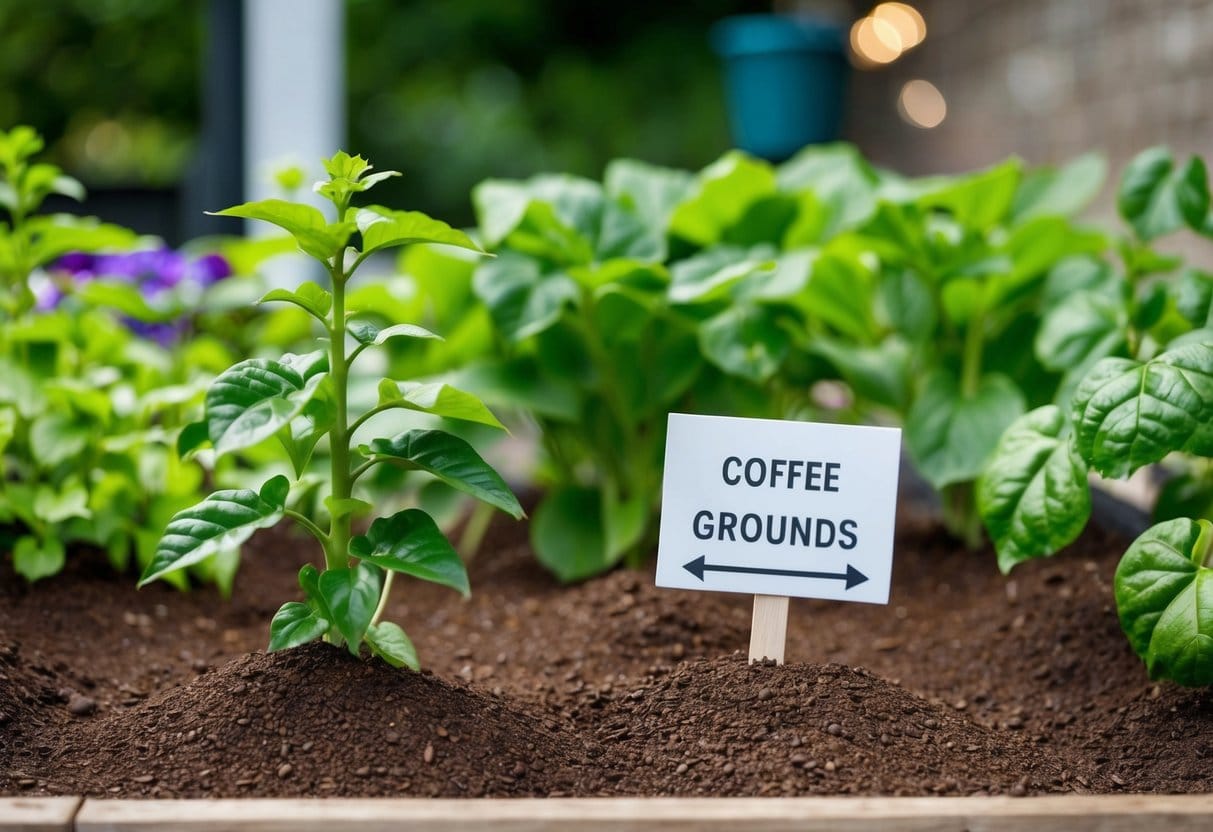
Coffee grounds can serve as a valuable organic additive for various plants, particularly those that thrive in slightly acidic environments. Many houseplants, flowers, and vegetables can take advantage of the nutrients in coffee grounds. Here is a closer look at which plants benefit most from this common kitchen waste.
What Vegetables Enjoy Coffee Grounds?
Certain vegetables respond well to the fertilizing properties of coffee grounds. Here’s a list of some popular ones:
- Potatoes: During their crucial budding and flowering stages, potatoes need an extra boost from nutrients like nitrogen, phosphorus, and potassium, all of which coffee grounds provide.
- Cucumbers: These crops thrive in enriched soil. Adding coffee grounds can improve soil structure and provide essential nutrients.
- Peppers: This vegetable benefits from the nitrogen content in coffee, promoting healthy growth and better yields.
- Carrots: Carrots require well-aerated and nutrient-rich soil. Mixing in coffee grounds helps achieve this, as they prefer a fertile, loose environment.
- Beans: Coffee grounds can enhance soil fertility, making it a good addition for growing beans.
Non-commercial gardeners should note that onions prefer organic fertilizers, particularly those high in nitrogen. Using coffee grounds can lead to better growth in onion and other leafy green crops, such as spinach and lettuce.
Is Coffee Beneficial for Plants?
Coffee grounds provide various essential minerals like magnesium, calcium, phosphorus, nitrogen, and potassium. These nutrients contribute to healthy plant growth. Phosphorus and potassium enhance yields, while nitrogen supports photosynthesis, promoting faster development in both indoor and outdoor plants.
Ways To Use Coffee Grounds in the Garden
Are Coffee Grounds Good for Flowers?
Many flowering plants flourish when nourished with coffee grounds. They are especially beneficial for the following:
- Roses: These flowers thrive with the additional potassium found in coffee grounds, which helps ward off pests. Incorporating grounds makes the soil lighter, enhancing root airflow and nutrient absorption.
- Hibiscuses: An organic and safe choice, coffee grounds provide essential nutrients that support healthy hibiscus growth and elongate the flowering period. Monthly applications in spring and winter work well.
- Begonias: This plant enjoys a boost of nitrogen and phosphorus. Coffee grounds can replace chemical fertilizers while promoting bud and flower development.
- Peonies, Lilies, Hostas, and Tulips: These flowers also appreciate the nutrient-rich nature of coffee grounds. They benefit from improved root health and overall vitality when fed with this natural fertilizer.
Using coffee grounds in gardening can enhance both vegetable growth and flower vitality, making them a popular choice among indoor and outdoor plant enthusiasts.
Which Plants Do Not Prefer Coffee Grounds?
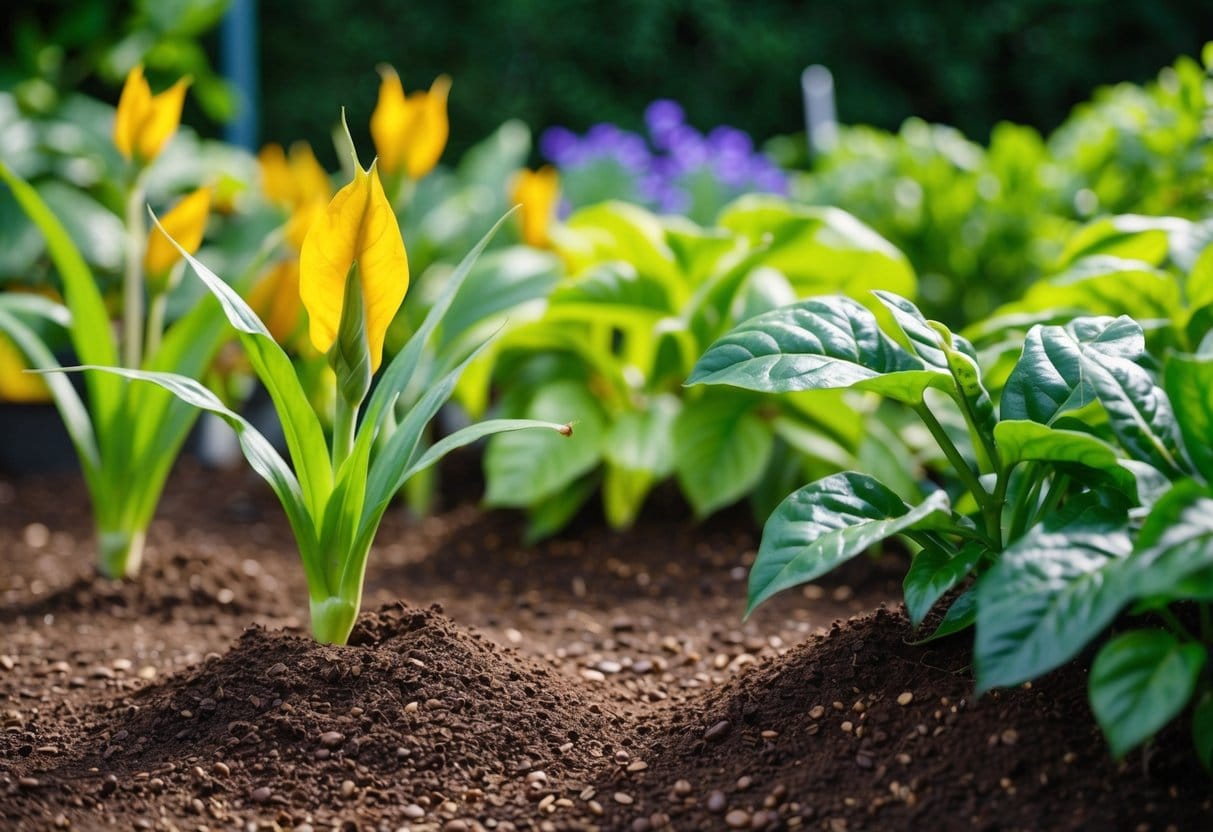
Lavender
Lavender thrives in alkaline soil, which is essential for its growth and blooming. It benefits from fertilizers high in potassium but struggles with nitrogen-rich additions. Thus, using coffee grounds can be harmful, leading to the plant’s decline.
Orchids
These epiphytic plants are sensitive to acidity, making coffee grounds unsuitable for them. The acidic nature can cause root rot and foster mold growth, potentially attracting pests like mosquitoes. Although coffee contains nitrogen necessary for orchids, their roots are unable to absorb it, which can worsen their condition.
Rosemary
This herb prefers well-drained, neutral pH soil and does not fare well in acidic conditions. Applying coffee grounds introduces acidity, which can harm rosemary. Instead, it benefits from mineral and organic fertilizers that help maintain a neutral environment and should be fertilized every two weeks.
Frequency of Adding Coffee Grounds to Plants
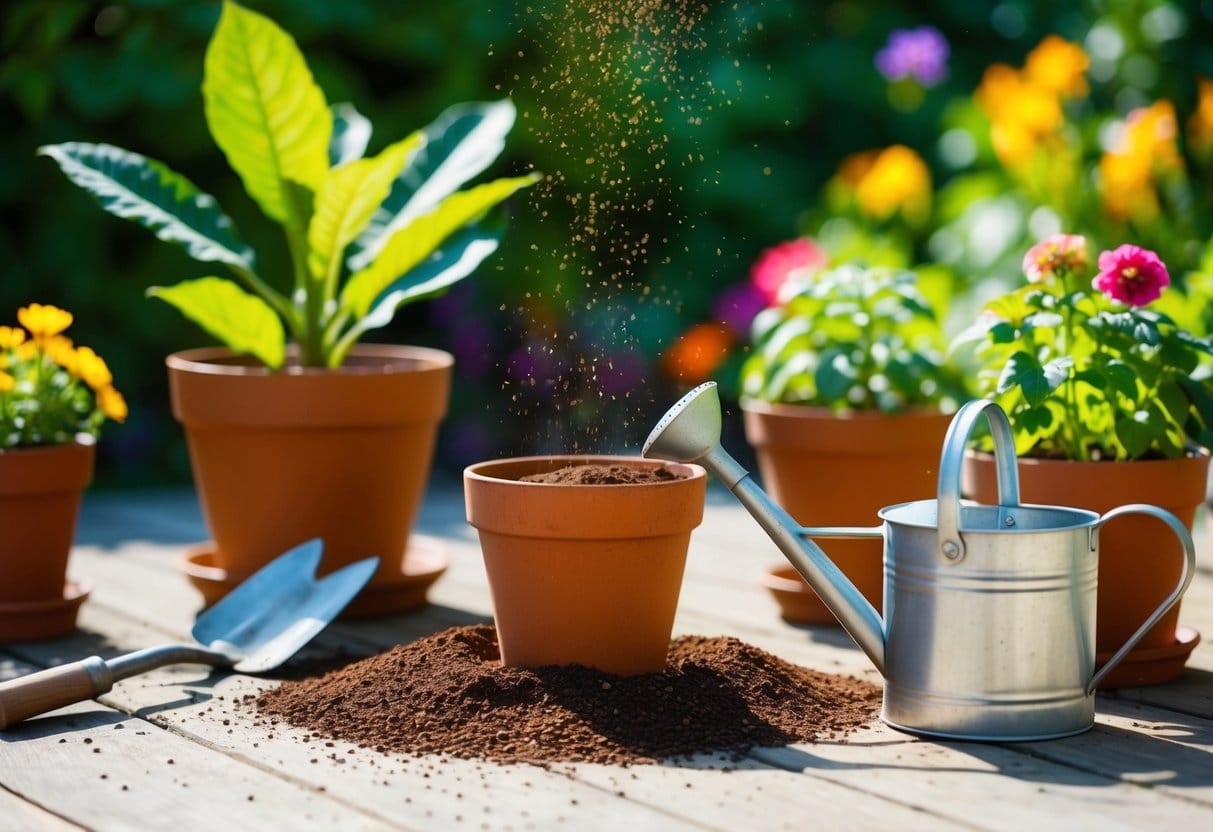
To enhance plant health, coffee grounds can be added to houseplants every 7 to 10 days. It’s important not to exceed this frequency to avoid making the soil too acidic.
For composting, adding a cup of dried brewed coffee grounds once a week is recommended. This drying step is essential to reduce the risk of mold growth.
FAQ
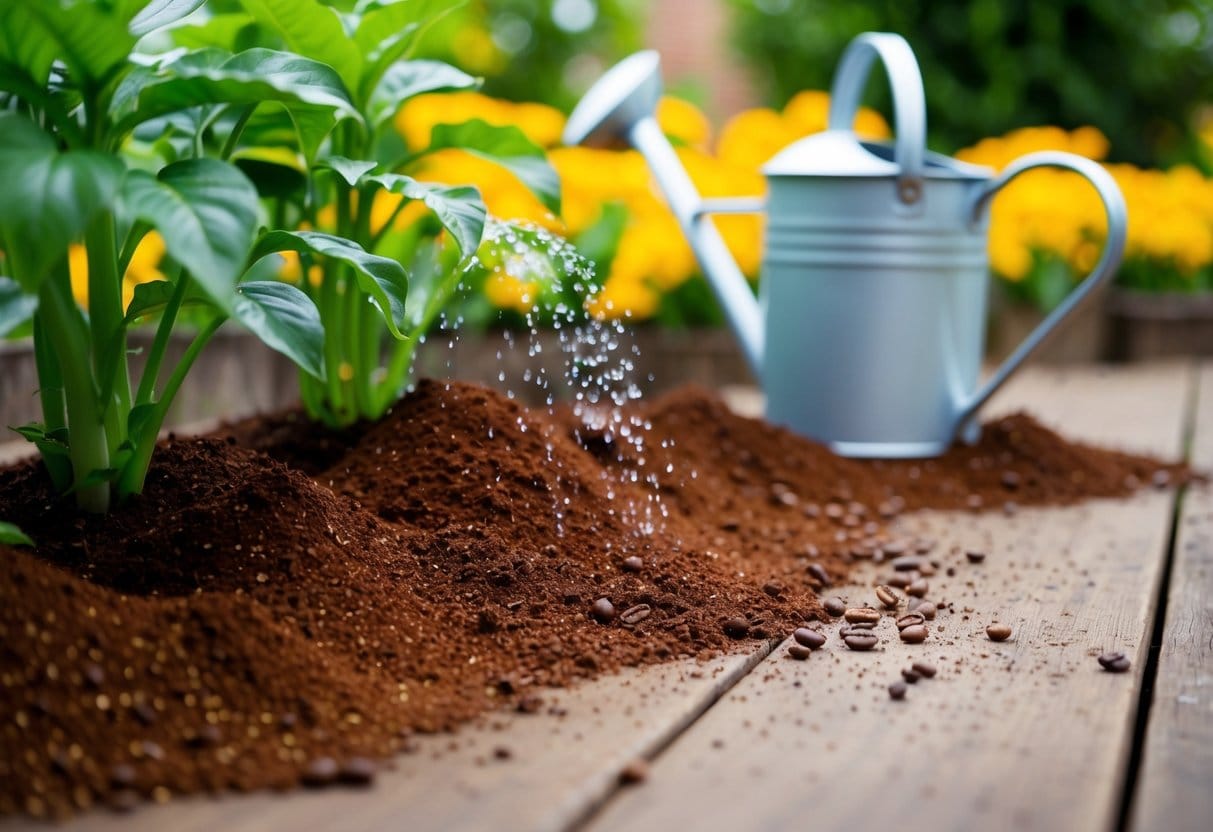
Do Rhododendrons Benefit from Coffee Grounds?
Rhododendrons thrive in acidic soil, which is created by adding coffee grounds. This additional fertilizer can enhance their growth, especially when combined with other nutrients like horn shavings. These plants may face threats from root weevils, but a coffee mixture can be used as a spray to help deter these pests.
Are Coffee Grounds Suitable for Ferns?
Adding coffee grounds to soil for ferns is not advisable. The excess nitrogen from coffee can hinder their growth. Additionally, coffee has antibacterial properties that may harm the essential microorganisms required for ferns to thrive. Therefore, it’s best to avoid using coffee around fern plants.
Do Gardenias Prefer Coffee Grounds?
Gardenias enjoy coffee grounds in their soil. These grounds provide a rich source of nitrogen and help lower the soil’s pH, which is beneficial for these acid-loving plants. Incorporating coffee grounds can lead to healthier roots and more vibrant blooms.
Is It Safe to Use Fresh Coffee Grounds in the Garden?
Using fresh coffee grounds in the garden is not recommended. They can increase moisture levels and support mold growth. To avoid this issue, it is best to dry coffee grounds before adding them to the soil. This can be done by spreading them out in an oven for a short period and then storing them in plastic bags.
Can Coffee Be Used to Water Plants?
Plants that benefit from coffee grounds can also be watered with coffee liquid. It acts as a strong fertilizer, so it should only be used once a week. To create this mixture, one should boil coffee and mix it with one and a half times the amount of water for a balanced solution.
Which types of plants gain the most from coffee grounds?
Certain plants particularly thrive with the addition of coffee grounds. Acid-loving plants such as tomatoes, azaleas, and blueberries often benefit the most. These plants can utilize the acidity in coffee grounds to their advantage, promoting healthy growth.
Are there specific plants that should avoid coffee grounds?
Not all plants should receive coffee grounds. Some plants, like those in the nightshade family, including potatoes and eggplants, may not respond well to coffee grounds. It is best to avoid using coffee grounds on plants that prefer neutral or alkaline soil.
How can coffee grounds be added to the soil for best results?
To incorporate coffee grounds effectively, they should be sprinkled lightly over the soil. They can be mixed into the compost pile or added directly to the planting area. You should ensure that coffee grounds are not piled too thickly to prevent compaction.
Can indoor plants benefit from coffee grounds, and if so, how?
Indoor plants can also take advantage of coffee grounds. They can be mixed into potting soil or used as a top dressing. Just use them sparingly to avoid issues such as mold growth.
What precautions should be taken when using coffee grounds in winter?
When using coffee grounds in winter, gardeners should be cautious. Applying coffee grounds too late in the season can lead to unwanted acidity in the soil during cold months.
It’s beneficial to mix them into the compost pile early to allow for proper breakdown before spring planting.


